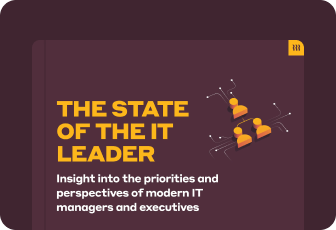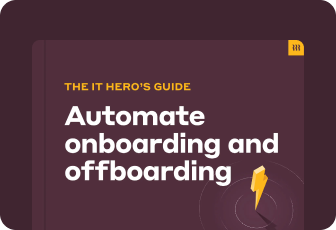Onboarding is the process of integrating new employees into a company, involving orientation, training, and introduction to the company's culture and procedures. It aims to equip new hires with the necessary tools and knowledge to succeed in their roles.
Onboarding vs. orientation
Onboarding and orientation are often used interchangeably, but they serve different purposes in the employee integration process. Employee orientation is typically a one-time event that introduces new hires to the company's policies, procedures, and facilities. It usually lasts a few hours to a day and covers essential information such as company history, mission, benefits, and safety procedures.
Onboarding, on the other hand, is a comprehensive, long-term process that starts before and extends beyond the initial orientation. It involves continuous training, mentorship, and social integration to ensure new employees fully acclimate to their roles and the company culture. New employee onboarding can last from a few weeks to several months, depending on the complexity of the job and the organization's needs.
What is the purpose of onboarding?
The purpose of onboarding is to give new employees a smooth and successful transition into their new jobs within a company. Onboarding is designed to integrate new hires into the organizational culture, align them with company values, and provide them with the necessary tools and knowledge to excel in their new role.
Some key objectives of an onboarding program include:
- Helping new team members acclimate to the work environment. Onboarding helps new employees become familiar with the physical and cultural work environment. This can include getting to know the office layout, learning where to find resources, and getting familiar with day-to-day operations.
- Communicating company values. Onboarding introduces new hires to the company's mission, vision, and values. This helps them understand the broader purpose of their role and how they contribute to the company's goals. It can also help foster a sense of belonging and commitment.
- Providing job training. Comprehensive job training can be included in the onboarding process. This equips the new employee with the specific skills and knowledge required for their new role, which can include technical training, process orientation, and hands-on practice.
- Building relationships with colleagues. Onboarding promotes relationship-building with colleagues and supervisors. It includes introductions to team members, mentors, and key contacts, which helps new hires build a support network and feel more connected to the team.
- Increasing engagement and retention. Effective onboarding increases employee engagement and retention by making new hires feel valued and supported, which creates a better employee experience from day one. It can help reduce turnover by making employees feel prepared, welcomed, and motivated from the start.
Why is onboarding important?
Onboarding sets the tone for the relationship between an employee and their employer, boosts employee retention, lowers turnover rates, and more. Here’s why onboarding is so important:
- It creates a positive first impression. The onboarding process sets the tone for the new hire's experience with the company. A good onboarding program helps new employees feel welcomed and valued from day one. This initial experience can significantly influence their perception of the company and their future engagement.
- It boosts retention. Effective onboarding is directly linked to higher employee retention rates. When new hires feel supported and prepared for their roles, they are more likely to stay with the company long-term. Good onboarding reduces the likelihood of early turnover, saving the company time and resources associated with recruiting and training new employees.
- It increases job satisfaction. Onboarding provides new employees with the knowledge and tools they need to succeed in their new roles. By offering thorough training and clear expectations, onboarding helps new hires feel competent and confident in their abilities.
- It gets new employees ramped faster. A comprehensive onboarding program helps new employees become productive more quickly. By providing them with the necessary training and resources, they can start contributing to the team and achieving their goals sooner. This benefits the company by accelerating the return on investment in new hires.
- It builds stronger teams. Onboarding helps new hires build relationships with their colleagues and supervisors. Through introductions, team-building activities, and mentorship programs, onboarding fosters a sense of camaraderie and support within the team. Strong interpersonal connections contribute to a more collaborative and positive work environment.
What does onboarding include?
A successful onboarding experience should start well before an employee’s first day—and continue well beyond it—so be sure to consider more than just day-one logistics. This onboarding checklist should help you get an idea of what an effective onboarding process should look like, but keep in mind that this is just a starting point, and the list should be tailored to each company’s individual needs and culture.
Before their first day:
- Complete a background check.
- Send an offer letter.
- Do the necessary new hire paperwork.
- Enroll them in benefits.
- Order and configure their devices.
- Set up their access to any apps and tools they need for their role.
- Prepare any required literature (like your employee handbook or compliance-related training materials).
- Assign them an onboarding buddy to show them the ropes.
- Schedule their new hire orientation.
On their first day:
- Onboard them to payroll to ensure their first paycheck won’t be delayed.
- Make sure their workspace is set up and ready to go.
- Send them a welcome email.
- Give them an agenda so they know what to expect on their first day.
- Schedule a one-on-one with their manager.
- Have a get-to-know-you event with other team members.
- Show them around the office (and make sure they know where to find the most important things, like bathrooms and safety equipment).
During their first 90 days:
- Provide general and role-specific training.
- Assign work and help them set goals as they ramp up.
- Schedule consistent check-ins (for example, 30-, 60-, and 90-day check-ins).
- Offer regular feedback.
How long does onboarding take?
The duration of the onboarding process can vary significantly depending on a company’s size and industry, and the complexity of the new hire’s role. However, effective onboarding typically extends beyond the first few days or weeks of employment and can last up to the first year. Here's a breakdown of an example onboarding timeline:
- Start date: Onboarding should begin before the new hire's official start date. Pre-boarding activities can include sending their offer letter, completing new hire paperwork, enrolling them in benefits, and scheduling their new hire orientation. This helps new employees feel prepared and reduces first-day anxiety.
- First week: The first week introduces the new hire to the company's culture, values, and work environment. During this time, new employees typically undergo orientation sessions, meet their team members, and receive an overview of their job responsibilities. This week sets the foundation for their role and helps them start building relationships.
- First month: The first month involves more in-depth training and integration into the team. New hires should receive job-specific training, start working on initial projects, and have regular check-ins with their managers. These activities help them gain confidence and integrate effectively into their team.
- First three to six months: During this period, the onboarding process should focus on continuous learning and development. New hires should have ongoing training opportunities, receive feedback on their performance, and be encouraged to ask questions.
- First year: Onboarding doesn't end after the first few months. A comprehensive onboarding process extends throughout the first year, with periodic reviews and development opportunities. By the end of the first year, employees should feel fully integrated into the company, understand their role thoroughly, and have a clear path for career growth.
How to create an onboarding program
Your human resources team should collaborate with managers and other stakeholders to coordinate onboarding. HR professionals should also serve as a point of contact for new hires, addressing any questions or concerns.
If your HR team is starting from scratch, here are some steps they can follow to develop an effective employee onboarding process:
- Define goals and objectives. Determine the primary goals of your onboarding program. These might include improving employee retention, accelerating time-to-productivity, and fostering a positive company culture. Clear objectives will guide the development of your onboarding plan.
- Develop a structured onboarding plan. Create a detailed onboarding plan that outlines the activities, timelines, and responsibilities for each phase of the onboarding process. The plan should cover preboarding, orientation, training, and ongoing support.
- Prepare resources and materials. Gather all necessary resources, such as training manuals, company policies, and access to systems and tools. Providing new hires with comprehensive resources helps them understand their role and the company more quickly.
- Assign mentors and buddies. Pair new hires with experienced employees who can provide guidance and support throughout the onboarding process. Mentors and buddies help new employees navigate their new environment, answer questions, and integrate into the company culture.
- Schedule regular check-ins. Plan regular meetings with new hires to discuss their progress, address concerns, and provide feedback. These check-ins should occur frequently during the first few months and then transition to less frequent intervals as the new hire becomes more comfortable in their role.
- Encourage feedback and continuous improvement. Gather feedback from new hires about their onboarding experience and use it to make improvements.
Onboarding best practices
To make your onboarding program as successful as possible, consider the following best practices:
Track metrics to measure success
Establish clear goals for your onboarding process and define metrics to measure success. Key performance indicators (KPIs) might include time-to-productivity, employee retention rates, and new hire satisfaction scores. Regularly review these metrics to identify areas for improvement.
Use employee onboarding software
Software with employee onboarding features like Rippling can help streamline and automate parts of the onboarding process. You can use software to manage tasks like sending welcome emails, tracking training progress, and making sure all necessary paperwork is completed on time. Automation reduces the administrative burden on your HR team, freeing up their time and resources for more strategic work.
Personalize the onboarding process
Tailor the onboarding process to meet the specific needs of each new hire. Consider their role, department, and prior experience to customize training and orientation activities. Personalization helps new employees feel more connected and supported.
Continuously improve the process
Regularly review and update your onboarding program based on feedback and performance metrics. Stay informed about best practices and industry trends to keep your onboarding process current and effective.
Frequently asked questions about onboarding
How does onboarding differ for in-person vs. remote employees?
Onboarding for in-person employees involves face-to-face interactions, physical tours of the workplace, and hands-on training. For remote employees, the process is adapted to a virtual format using video calls, digital resources, and online training platforms. Both types of onboarding should aim to make new hires feel welcomed and supported, but remote onboarding requires additional focus on maintaining communication and engagement.
When should the onboarding process start?
The onboarding process should begin as soon as the job offer is accepted. Preboarding activities, such as sending an offer letter, providing necessary paperwork, and sharing an overview of what to expect on the first day, help new hires feel prepared and reduce first-day anxiety. This early start sets a positive tone for their employment experience.
Disclaimer: Rippling and its affiliates do not provide tax, accounting, or legal advice. This material has been prepared for informational purposes only, and is not intended to provide or be relied on for tax, accounting, or legal advice. You should consult your own tax, accounting, and legal advisors before engaging in any related activities or transactions.



































































































